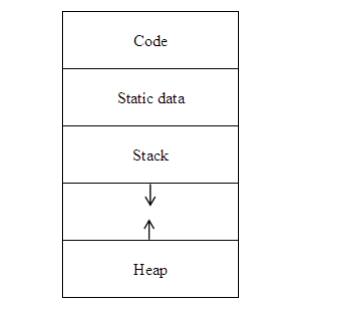Chapter: Principles of Compiler Design : Syntax Analysis and Run-Time Environments
Storage Organization
STORAGE ORGANIZATION
The executing target
program runs in its own logical address space in which each program value has a
location. The management and organization of this logical address space is
shared between the complier, operating system and target machine. The operating
system maps the logical address into physical addresses, which are usually spread
throughout memory.

Fig.
2.9 Typical subdivision of run-time memory into code and data areas
Run-time storage comes in blocks, where
a byte is the smallest unit of memory. Four bytesform a machine word.
Multibyte objects are bytes and given the address of first byte.
The storage layout for data objects is strongly
influenced by the addressing constraints of the target machine.
A character array of length 10 needs only enough
bytes to hold 10 characters, a compiler may allocate 12 bytes to get alignment,
leaving 2 bytes unused.
This unused space due to alignment considerations is
referred to as padding.
The size of some program objects may be known at run
time and may be placed in an area called static.
The dynamic areas used to maximize the utilization
of space at run time are stack and heap.
Activation records:
Procedure calls and
returns are usually managed by a run time stack called the control stack. Each
live activation has an activation record on the control stack, with the root of
the activation tree at the bottom, the latter activation has its record at the
top of the stack. The contents of the activation record vary with the language
being implemented.
Temporary values such as those arising from the
evaluation of expressions.
Local data belonging to the procedure whose
activation record this is.
A saved machine status, with information about the
state of the machine just before the call to procedures.
An access link may be needed to locate data needed
by the called procedure but found elsewhere.
A control link pointing to the activation record of
the caller.
Space for the return value of the called functions,
if any. Again, n return a value, and if one does, we may prefer to place that
value i efficiency.
The actual parameters used by the calling procedure.
These are not placed in record but rather in registers, when possible, for
greater efficiency.
Related Topics